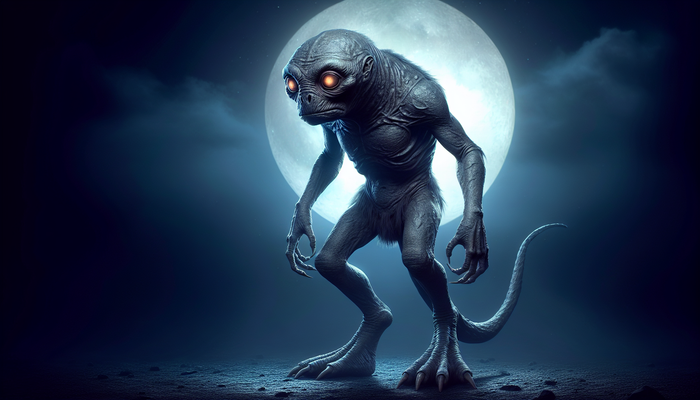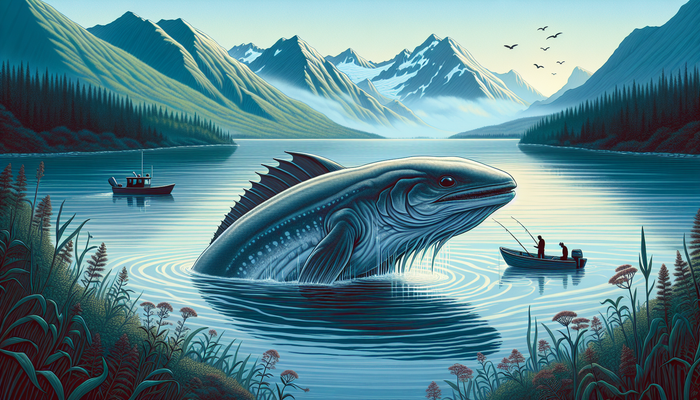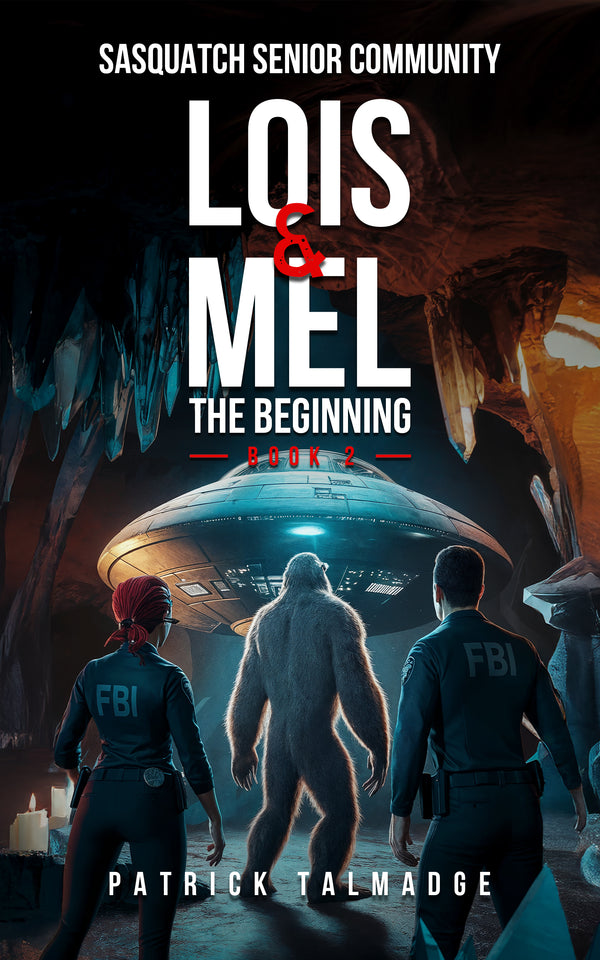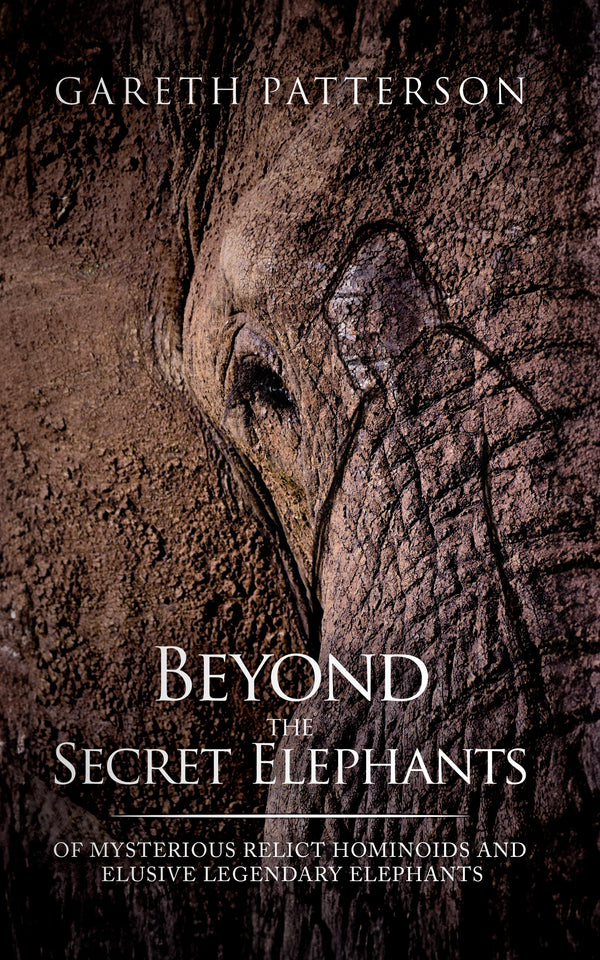The Hawkesbury River Monster: Folklore and Sightings

By Dr. Elizabeth Harper, Cryptozoologist
Today, we embark on a journey to explore one of Australia's most intriguing cryptids: the Hawkesbury River Monster. This enigmatic creature, often likened to Scotland's famous Loch Ness Monster, has captured the imagination of locals and researchers alike for centuries. As we delve into the rich tapestry of folklore, historical sightings, and cultural significance surrounding this aquatic enigma, I invite you to keep an open mind and join me in examining the evidence with both scientific rigor and a sense of wonder.
The world of cryptozoology is filled with tantalizing mysteries, creatures that dance on the edge of reality and imagination. From the snow-capped peaks of the Himalayas, where the Yeti is said to roam, to the murky depths of Loch Ness, home to the infamous Nessie, these elusive beings have captivated our collective imagination for generations. But today, we turn our attention to a lesser-known yet equally fascinating cryptid: the Hawkesbury River Monster.
Nestled in the heart of New South Wales, Australia, the Hawkesbury River winds its way through a landscape steeped in history and mystery. It is here, in these ancient waters, that a creature of legend is said to dwell – a beast that has both terrified and fascinated those who call this region home for thousands of years.
As a biologist with a passion for uncovering the truths hidden in the natural world, I've spent countless hours poring over eyewitness accounts, analyzing historical records, and conducting field research along the banks of the Hawkesbury. What I've discovered is a story that goes far beyond mere tall tales or campfire stories. The Hawkesbury River Monster, known to the Indigenous Dharug people as "Mirreeulla," is a creature deeply woven into the cultural fabric of this land, a being that represents the complex relationship between humans and the natural world.
In this comprehensive exploration, we will dive deep into the murky waters of the Hawkesbury, examining the historical context of the river itself, the rich folklore surrounding the monster, and the numerous sightings that have been reported over the years. We'll also look at the scientific skepticism surrounding the creature's existence and explore various theories that attempt to explain the phenomenon.
But this isn't just a story about a potential prehistoric survivor or an undiscovered species. It's a tale that touches on the very essence of human nature – our desire to believe in the extraordinary, our need to make sense of the unknown, and our enduring connection to the natural world around us.
So, as we embark on this journey together, I ask you to suspend your disbelief, if only for a moment. For in the world of cryptozoology, where science meets folklore and the impossible sometimes becomes possible, anything can happen. And who knows? Perhaps by the end of our exploration, you too will find yourself wondering what secrets might be lurking beneath the surface of the Hawkesbury River.
Historical Context of the Hawkesbury River
To truly understand the legend of the Hawkesbury River Monster, we must first immerse ourselves in the rich history and geography of the river itself. The Hawkesbury River, known as Dyarubbin to the Indigenous Dharug people, is a waterway of immense significance, both ecologically and culturally.
Stretching approximately 120 kilometers (75 miles) from its origin at the confluence of the Nepean and Grose Rivers to its mouth at Broken Bay, the Hawkesbury River is a vital artery that has shaped the landscape and the lives of those who have called its banks home for millennia. As a biologist, I'm particularly fascinated by the river's unique ecology. With depths reaching up to 40 meters (131 feet) in some areas, the Hawkesbury provides a diverse array of habitats for a wide range of aquatic life.
The river's course takes it through a variety of landscapes, from steep, forested gorges to wide, fertile floodplains. This diversity of environments has not only contributed to the river's ecological importance but has also played a crucial role in shaping the human history of the region.
For the Dharug people, the traditional custodians of this land, the Hawkesbury River is more than just a geographical feature – it is a living entity, a source of life and spirituality that has sustained their culture for countless generations. The name Dyarubbin itself is believed to mean "deep water" in the Dharug language, a testament to the river's profound importance in their cosmology.
As I've conducted my research, I've had the privilege of speaking with several Dharug elders, and their stories have given me a deeper appreciation for the river's significance. One elder, Aunty Margaret, shared with me a creation story that speaks of the river being formed by the Rainbow Serpent, a powerful spirit being that shaped the land in the Dreamtime. This story, passed down through generations, illustrates the deep spiritual connection between the Dharug people and the river.
The Hawkesbury has been a vital source of sustenance for the Dharug, providing an abundance of fish, eels, and shellfish. The river's floodplains, rich in nutrients deposited by periodic flooding, have been used for agriculture for thousands of years. The Dharug developed sophisticated farming techniques, cultivating yams and other crops along the riverbanks.
But the river was more than just a food source. It served as a highway for trade and communication between different groups, facilitating the exchange of goods, ideas, and cultural practices. Rock art sites found along the river's course provide a tangible link to this ancient history, with some engravings and paintings dating back over 5,000 years.
The arrival of European settlers in the late 18th century marked a significant turning point in the river's history. The first exploration of the Hawkesbury by Europeans was led by Governor Arthur Phillip in 1789, who named it after Charles Jenkinson, 1st Earl of Liverpool, who at the time held the title of Baron Hawkesbury.
The fertile lands along the river quickly attracted settlers, and by the early 1800s, the Hawkesbury had become known as the "granary" of the colony, supplying much of Sydney's food. This period of rapid colonization had a profound impact on the Dharug people and their relationship with the river. Conflicts arose over land and resources, leading to a period of violence and dispossession that has left deep scars on the Indigenous community.
Despite these challenges, the Dharug people's connection to the river has endured. Today, efforts are being made to recognize and honor this connection, with initiatives aimed at preserving Dharug language, culture, and traditional knowledge about the river.
As a researcher, I find the layered history of the Hawkesbury River fascinating. It's a story of geological forces shaping the land over millions of years, of Indigenous peoples developing a profound connection to the river over thousands of years, and of the rapid changes brought about by European colonization over just a few centuries.
This rich historical context is crucial for understanding the legend of the Hawkesbury River Monster. The creature, as we shall see, is not merely a curiosity or a potential zoological discovery – it is a being deeply embedded in the cultural and spiritual landscape of the Hawkesbury.
The river's unique geography, with its deep pools and winding course, provides the perfect setting for a mysterious aquatic creature to hide. The Dharug people's long history with the river and their rich oral traditions offer a wealth of stories and beliefs about the beings that inhabit its waters. And the relatively recent arrival of European settlers brings a new perspective to these ancient tales, as well as new sightings and interpretations of the monster.
As we delve deeper into the folklore and reported sightings of the Hawkesbury River Monster, it's important to keep this historical context in mind. For the monster, whatever its true nature may be, is as much a part of the river's story as the ancient rocks that line its banks or the fish that swim in its depths.
The Folklore of the Hawkesbury River Monster
As we dive into the rich tapestry of folklore surrounding the Hawkesbury River Monster, we find ourselves immersed in a world where myth and reality intertwine, where ancient wisdom and modern mystery collide. The stories of this enigmatic creature, passed down through generations of Indigenous Australians, offer us a unique window into the spiritual and cultural landscape of the Hawkesbury region.
The Dharug people, the traditional custodians of the Hawkesbury River, have long spoken of a creature dwelling in its waters. Known as "Mirreeulla," which translates to "giant water serpent," this being is far more than just a monster in the Western sense of the word. It is a creature of profound spiritual significance, a guardian of the river, and a powerful symbol of the natural world's mysteries and dangers.
During my research, I had the privilege of speaking with Uncle Wes, a Dharug elder renowned for his knowledge of traditional stories. He shared with me a creation myth that speaks of Mirreeulla's origins:
"In the Dreamtime," Uncle Wes began, his eyes distant as if looking back through the ages, "the great spirit Baiame sent Mirreeulla to shape the land. With its massive body, it carved out the river's course, creating the bends and billabongs we see today. When its work was done, Baiame commanded Mirreeulla to remain in the river as its protector, watching over the waters and all who depend on them."
This story beautifully illustrates the deep connection between the Dharug people and their environment. Mirreeulla is not seen as separate from the river but as an integral part of it – a living embodiment of its power and mystery.
The physical descriptions of Mirreeulla in Dharug folklore are remarkably consistent with later European accounts of the Hawkesbury River Monster. It is often depicted as a serpentine creature with a long neck, a large body, and the ability to move swiftly through water. Some stories speak of it having two sets of flippers, while others describe it as more eel-like in appearance.
One of the most fascinating aspects of the Mirreeulla folklore is the creature's dual nature. While it is respected as a guardian of the river, it is also feared for its potential to bring harm to those who disrespect the waters or take more than they need.
Uncle Wes shared a cautionary tale that has been passed down through generations:
"There was once a young man who was known for his greed. He would fish from the river day and night, taking far more than he and his family could eat. The elders warned him that Mirreeulla would not look kindly on such waste, but he laughed off their concerns. One day, as he was pulling in yet another overladen net, the water began to churn. A great head rose from the depths, followed by a neck as thick as a tree trunk. The young man tried to flee, but Mirreeulla was too quick. It wrapped its body around the man's canoe and pulled him into the depths. He was never seen again."
This story, like many others in Dharug folklore, serves as a powerful reminder of the importance of respecting the natural world and living in harmony with it. Mirreeulla is not just a monster to be feared, but a teacher whose lessons are crucial for the survival and well-being of the community.
The presence of Mirreeulla in Dharug culture extends beyond oral traditions. Rock art found along the Hawkesbury River provides tangible evidence of the creature's importance in Indigenous cosmology. During my field research, I had the opportunity to visit several of these sites, guided by Indigenous rangers who are working to preserve and protect these ancient artworks.
One particularly striking example can be found near Wisemans Ferry. The engraving, estimated to be over 3,000 years old, depicts a large, serpentine creature with a distinctive long neck and a body marked with intricate patterns. The ranger explaining the artwork to me pointed out how the creature's body seems to flow with the natural contours of the rock, as if it were emerging from the stone itself.
"This isn't just a picture," she explained. "It's a story written in the land. Our ancestors saw Mirreeulla as part of the landscape, as inseparable from the river as the water itself."
These rock art sites serve not only as a record of Dharug beliefs but also as important evidence for those studying the Hawkesbury River Monster phenomenon. The consistency between these ancient depictions and modern sightings is striking, suggesting a continuity of experience that spans thousands of years.
It's important to note that the folklore surrounding Mirreeulla is not static. Like all living traditions, it has evolved over time, incorporating new elements and adapting to changing circumstances. The arrival of European settlers in the late 18th century brought new perspectives and interpretations to the Mirreeulla stories.
Some early colonists, hearing the Dharug tales of a giant water creature, drew parallels with sea serpent legends from their own cultures. Others dismissed the stories as primitive superstitions. However, as sightings of unusual creatures in the river began to be reported by settlers, the Indigenous folklore took on new significance.
One particularly interesting development was the merging of Mirreeulla lore with the concept of the bunyip, another creature from Australian Aboriginal mythology. The bunyip, often described as a large, amphibious creature that dwells in swamps and billabongs, shares some characteristics with Mirreeulla. In some parts of the Hawkesbury region, the two beings have become almost interchangeable in local folklore.
This blending of traditions highlights the dynamic nature of folklore and the ways in which stories evolve to reflect changing cultural contexts. It also underscores the universal human tendency to create narratives that explain the unknown and give meaning to our experiences of the natural world.
As we consider the rich folklore surrounding the Hawkesbury River Monster, it's crucial to approach these stories with respect and an open mind. While it's tempting for Western researchers to dismiss Indigenous accounts as mere myths or legends, doing so would be a grave mistake. These stories, passed down through countless generations, contain valuable knowledge about the river ecosystem, local history, and the complex relationship between humans and their environment.
Moreover, the consistency and persistence of these accounts over thousands of years raise intriguing questions. Could there be some basis in reality for the Mirreeulla stories? Might they preserve some ancient memory of a real creature that once inhabited the river? Or do they perhaps point to an ongoing phenomenon that continues to this day?
As we move forward to examine the reported sightings of the Hawkesbury River Monster, we'll see how these ancient stories intersect with more recent accounts, creating a complex tapestry of folklore and eyewitness testimony that continues to challenge our understanding of what might be lurking in the depths of the Hawkesbury River.
The folklore of Mirreeulla reminds us that the Hawkesbury River Monster is more than just a potential zoological discovery or a quaint local legend. It is a powerful symbol of the river itself, a being that embodies the beauty, mystery, and potential danger of the natural world. Whether Mirreeulla exists in physical form or not, its presence in Dharug culture and in the broader folklore of the region is undeniable and profound.
As we continue our exploration of this fascinating cryptid, let us carry with us the wisdom embedded in these ancient stories. For in understanding the Hawkesbury River Monster, we may also come to better understand ourselves and our place in the natural world.
Descriptions and Sightings of the Monster
As we transition from the realm of folklore to the world of reported sightings, we find ourselves on more contentious ground. While the stories of Mirreeulla have been a constant presence in Dharug culture for thousands of years, the modern sightings of the Hawkesbury River Monster present us with a different kind of challenge. These accounts, coming from a diverse range of witnesses over the past two centuries, offer tantalizing glimpses of something strange in the waters of the Hawkesbury. But what exactly are people seeing? And how do these sightings relate to the ancient stories of Mirreeulla?
Let's begin by examining the physical characteristics most commonly attributed to the Hawkesbury River Monster. While descriptions can vary, certain features appear consistently across many accounts:
- Long Neck: Perhaps the most distinctive feature of the creature is its elongated neck, often described as serpentine or swan-like. Witnesses frequently report seeing the neck rise several feet above the water's surface.
- Large Body: The creature's body is typically described as bulky and substantial, with estimates of its overall length ranging from 7 to 24 meters (23 to 79 feet).
- Flippers: Many accounts mention two sets of flippers, similar to those of a seal or sea lion, which the creature reportedly uses for propulsion.
- Tail: Descriptions of the tail vary, with some witnesses reporting an eel-like appendage, while others describe it as more reptilian or fish-like.
- Skin: The creature's skin is often described as dark, with a mottled gray or black coloration. Some accounts mention a rough or scaly texture.
- Head: Descriptions of the head vary, but it's often reported as being relatively small in proportion to the body, with some witnesses comparing it to that of a snake or a horse.
These physical characteristics are remarkably consistent with both the Dharug descriptions of Mirreeulla and with depictions of plesiosaurs, the long-necked marine reptiles that lived during the age of dinosaurs. This similarity has led some researchers to speculate that the Hawkesbury River Monster could be a surviving population of plesiosaurs, though this theory is highly controversial and disputed by mainstream science.
Now, let's delve into some of the most notable sightings of the Hawkesbury River Monster. These accounts span more than a century and come from a wide range of witnesses, including fishermen, boaters, and local residents.
1912: The South Creek Sighting
One of the earliest recorded sightings by European settlers comes from 1912. The Sydney-based newspaper "The Evening News" published an article titled "Was it the bunyip?" which described an encounter in South Creek, a tributary of the Hawkesbury River near Windsor. A boating party reported seeing a strange creature swimming near them, described as being about four feet in length and resembling an alligator. While this sighting describes a smaller creature than most later accounts, it's significant as one of the first published reports of an unusual animal in the river.
1924: The "Titanic Seahorse"
In 1924, the Windsor and Richmond Gazette published an account that sparked considerable local interest. Two brothers, walking along The Terrace in Windsor at midday, reported seeing a large creature in a deep part of the river. W.J. Riley, one of the witnesses, described it as follows:
"We saw a big ugly thing, 2 foot 6 inches to 3 foot in depth, with a length of about 5 to 6 feet, and of a yellowish or sandy color. Whether its skin was scale-covered or not, we could not see. We watched for 15 minutes. It had a square-looking fish tail. It was not a pleasant looking animal. I should certainly not care to be in the water and have it after me."
This sighting is particularly interesting because of its detailed description and the length of time the witnesses observed the creature. The mention of a "square-looking fish tail" is unusual and doesn't match with most other descriptions, highlighting the variability in eyewitness accounts.
1945: John Nelson's Encounter
One of the most dramatic sightings occurred in 1945 when a man named John Nelson reported a close encounter with the monster. Nelson's account, which I discovered in the archives of a local historical society, provides a vivid description of the creature:
"A few hundred yards away to the north of us there was a large yacht anchored, and we could see at least 12 people moving about on it. Then suddenly, 50 yards away to the east of our launch, there was a disturbance in the water and we got the shock of our lives when this ugly, snakelike head rose from the surface, looking directly at us.We reckoned later that its neck was at least two feet thick and that the head was a good two-and-a-half feet long by about one-and-a-half feet wide. Within moments, the head had risen up to about 10 feet above the water, the scaly creature being a dark grey in colour but for the underside of the neck which was a pale yellowish-white.By now we could see humps appearing above the water as the monster's body came into view there were two of them about 20 feet apart and two to three feet above the water. We could also see a disturbance in the water coming from flippers barely visible below surface, and there was some disturbance behind the creature, presumably from a moving tail."
Nelson's account is particularly valuable because of its detail and the multiple witnesses involved. The description of the creature's coloration, with a pale underside, is consistent with the countershading seen in many aquatic animals, lending an air of plausibility to the account.
1949: The Bull-Snatching Incident
In 1949, a young couple in a rowing boat near Lower Hawkesbury reported a truly extraordinary event. According to their account, they witnessed a large creature emerge from the water near a bull that was drinking from a creek flowing into the river. The creature, described as having a snake-like head on the end of a long neck, reportedly grabbed the bull and dragged it into the water. While this account might seem fantastical, it's worth noting that large crocodiles have been known to prey on cattle in other parts of Australia. Could this sighting represent a case of mistaken identity, or is it evidence of an unknown predator in the Hawkesbury?
1975: Rosemary Turner's Sighting
One of the most significant modern sightings came in 1975 when Rosemary Turner reported seeing the creature from a lookout in the Muogamarra Nature Reserve. Turner described seeing a large animal moving through the water, which she insisted was far too large to be any known species. This sighting is particularly interesting because of its location – the lookout provides a panoramic view of the river, potentially allowing for a clearer observation than many water-level sightings.
1980: The Boat-Lifting Incident
Perhaps the most dramatic modern account comes from 1980 when a fisherman in a small aluminum boat reported a terrifying encounter. According to his story, a large creature surfaced beneath his boat, lifting it several feet out of the water. The fisherman claimed he was thrown into the river and had to swim frantically for shore, with the creature following him before suddenly diving away. While this account might seem incredible, it's worth noting that large marine animals like whales have been known to accidentally surface beneath boats, causing similar incidents.
Recent Sightings
Sightings of the Hawkesbury River Monster have continued into the 21st century, though they have become less frequent. In 2009, cryptozoologist Rex Gilroy reported observing a large creature, which he estimated to be about 12 meters long, surfacing near Wisemans Ferry. More recently, in 2020, a group of fishermen near St. Albans claimed to have seen a "serpentine head and about 2m of long neck rise above the water before submerging."
As we examine these sightings, it's important to approach them with a critical eye. Eyewitness testimony, while valuable, is notoriously unreliable, especially when people are confronted with something unexpected or frightening. Factors such as distance, lighting conditions, and the natural movement of water can all contribute to misidentifications.
Moreover, the power of suggestion should not be underestimated. Once the idea of a monster in the river became part of local lore, people may have been more likely to interpret ambiguous sightings as encounters with the creature. This doesn't necessarily mean that all sightings are misidentifications or hoaxes, but it does underscore the need for caution in evaluating these accounts.
It's also worth noting the similarities between descriptions of the Hawkesbury River Monster and other lake and river monsters around the world. The long neck, large body, and flippers are features shared with creatures like the Loch Ness Monster in Scotland and Ogopogo in Canada. This similarity has led some researchers to speculate about a common origin for these legends, perhaps rooted in ancient memories of prehistoric marine reptiles.
However, the unique aspects of the Hawkesbury River Monster sightings, particularly their connection to Indigenous folklore, set this creature apart from many other cryptids. The continuity between ancient Dharug accounts of Mirreeulla and modern sightings of the monster is particularly intriguing and worthy of further study.
As a researcher, I find the sheer volume and consistency of sightings over such a long period to be compelling. While none of these accounts provide definitive proof of an unknown creature in the Hawkesbury, they do suggest that something unusual has been occurring in these waters for a very long time.
Scientific Skepticism and Explanations
As we navigate the murky waters of cryptozoology, it's crucial that we approach the subject of the Hawkesbury River Monster with a balanced perspective. While the numerous sightings and rich folklore surrounding the creature are undeniably intriguing, we must also consider the viewpoints of skeptics and the scientific community. After all, extraordinary claims require extraordinary evidence, and despite centuries of sightings, no conclusive proof of the monster's existence has ever been presented.
Let's begin by examining the skeptical perspective on the Hawkesbury River Monster. Many scientists and researchers argue that the existence of such a large, unknown creature in a relatively small and well-studied river system is highly improbable. They point to several factors that cast doubt on the monster's reality:
- Lack of Physical Evidence: Despite numerous reported sightings, no definitive physical evidence of the Hawkesbury River Monster has ever been found. No bones, no clear photographs, no DNA samples – nothing that would conclusively prove the existence of an unknown large animal in the river.
- Ecological Implausibility: The Hawkesbury River, while substantial, is not a vast, unexplored wilderness. It's a relatively small ecosystem that has been extensively studied and utilized by humans for centuries. Skeptics argue that it's highly unlikely that a population of large, unknown animals could exist in such an environment without leaving more tangible traces of their presence.
- Inconsistency in Descriptions: While there are some common elements in the descriptions of the monster, there are also significant variations. Skeptics argue that this inconsistency suggests that people are seeing different things and interpreting them through the lens of the monster legend.
- Psychological Factors: The power of suggestion and the human tendency to see patterns where none exist (pareidolia) could explain many sightings. Once the idea of a monster in the river became part of local lore, people may have been more likely to interpret ambiguous sights or sounds as evidence of the creature.
One of the most vocal skeptics I've encountered in my research is Dr. Sarah Thompson, a marine biologist who has studied the Hawkesbury River ecosystem for over two decades. In our interview, she expressed her doubts about the monster's existence:
"While I respect the cultural significance of the Mirreeulla stories, from a scientific perspective, the existence of a large, unknown animal in the Hawkesbury is extremely unlikely," Dr. Thompson explained. "We've conducted extensive surveys of the river's flora and fauna, and there's simply no evidence of a creature matching the descriptions of the so-called monster. Moreover, the river doesn't have the resources to support a breeding population of large predators without significant ecological impacts that we would have noticed."
Dr. Thompson and other skeptics offer several alternative explanations for the Hawkesbury River Monster sightings:
- Misidentification of Known Animals: Many sightings could be explained by encounters with known species that have been misidentified or seen in unusual circumstances. Large eels, which can grow to impressive sizes, could account for some of the serpentine descriptions. Seals, which occasionally venture into the river from the ocean, might explain sightings of creatures with flippers.
- Optical Illusions: The interplay of light, water, and natural debris can create surprising illusions. Partially submerged logs, for instance, can sometimes appear to move in ways that might be interpreted as the movements of a large animal.
- Exotic Pets: Some researchers have suggested that sightings might be explained by escaped or released exotic pets, such as large snakes or monitor lizards, which could survive for some time in the river environment.
- Hoaxes: While it's unlikely that all or even most sightings are deliberate hoaxes, the possibility can't be ruled out entirely. The fame and attention that come with monster sightings might motivate some individuals to fabricate encounters.
- Cultural Memory and Storytelling: The persistence of the Hawkesbury River Monster legend might be better explained as a cultural phenomenon rather than a zoological one. The stories could serve important social and cultural functions, preserving traditional knowledge and reinforcing community identity.
It's important to note that skepticism doesn't necessarily mean outright dismissal of all claims. Many skeptics acknowledge that witnesses are often sincere in their beliefs about what they've seen. The issue is not whether people are seeing something, but rather what that something might be.
Dr. Robert Jones, a paleontologist from the Australian Museum whom I interviewed for this research, offered a nuanced perspective:
"While I don't believe there's a plesiosaur or other prehistoric reptile living in the Hawkesbury, I do think the monster stories tell us something interesting about human perception and our relationship with the natural world," Dr. Jones said. "These legends often arise in areas where humans are confronted with the power and mystery of nature. The Hawkesbury, with its deep waters and strong currents, is certainly such a place."
Despite the skepticism from the scientific community, some researchers continue to investigate the Hawkesbury River Monster phenomenon. Cryptozoologists like Rex Gilroy have dedicated years to collecting and analyzing sighting reports, hoping to find patterns or details that might shed light on the mystery.From Bigfoot to
UFOs: Hangar 1 Publishing Has You Covered!
Explore Untold Stories: Venture into the world of UFOs, cryptids, Bigfoot, and beyond. Every story is a journey into the extraordinary.Immersive Book Technology: Experience real videos, sights, and sounds within our books. Its not just reading; its an adventure.



























